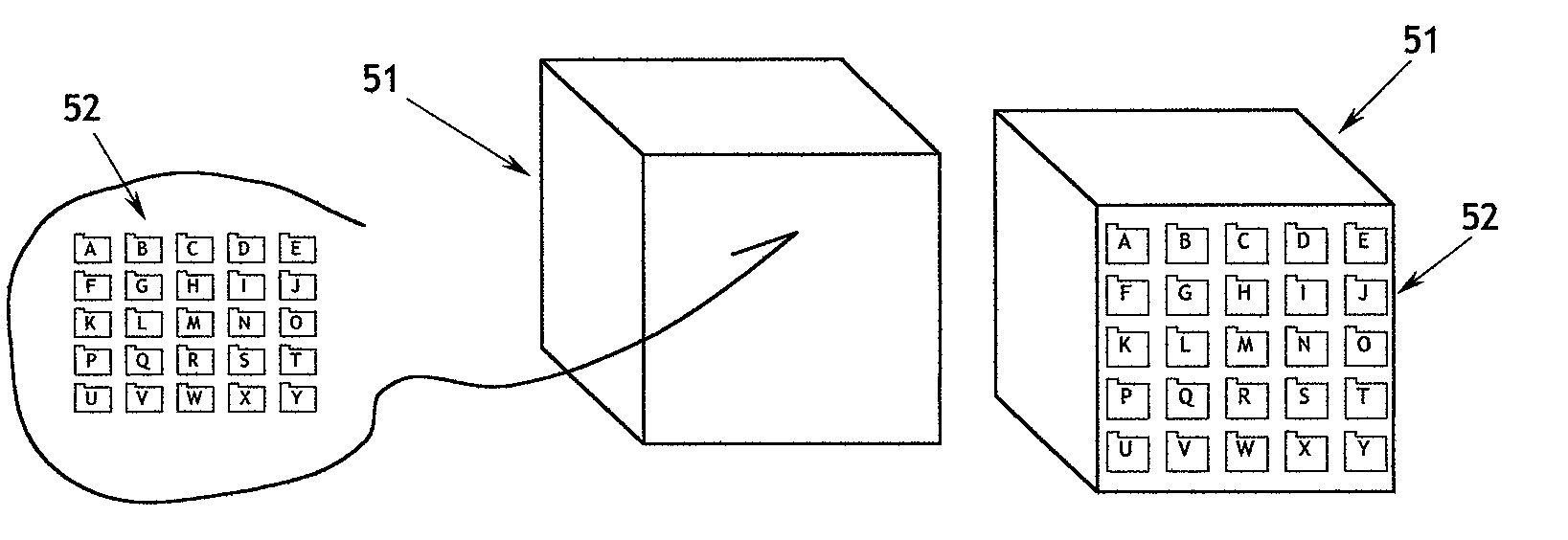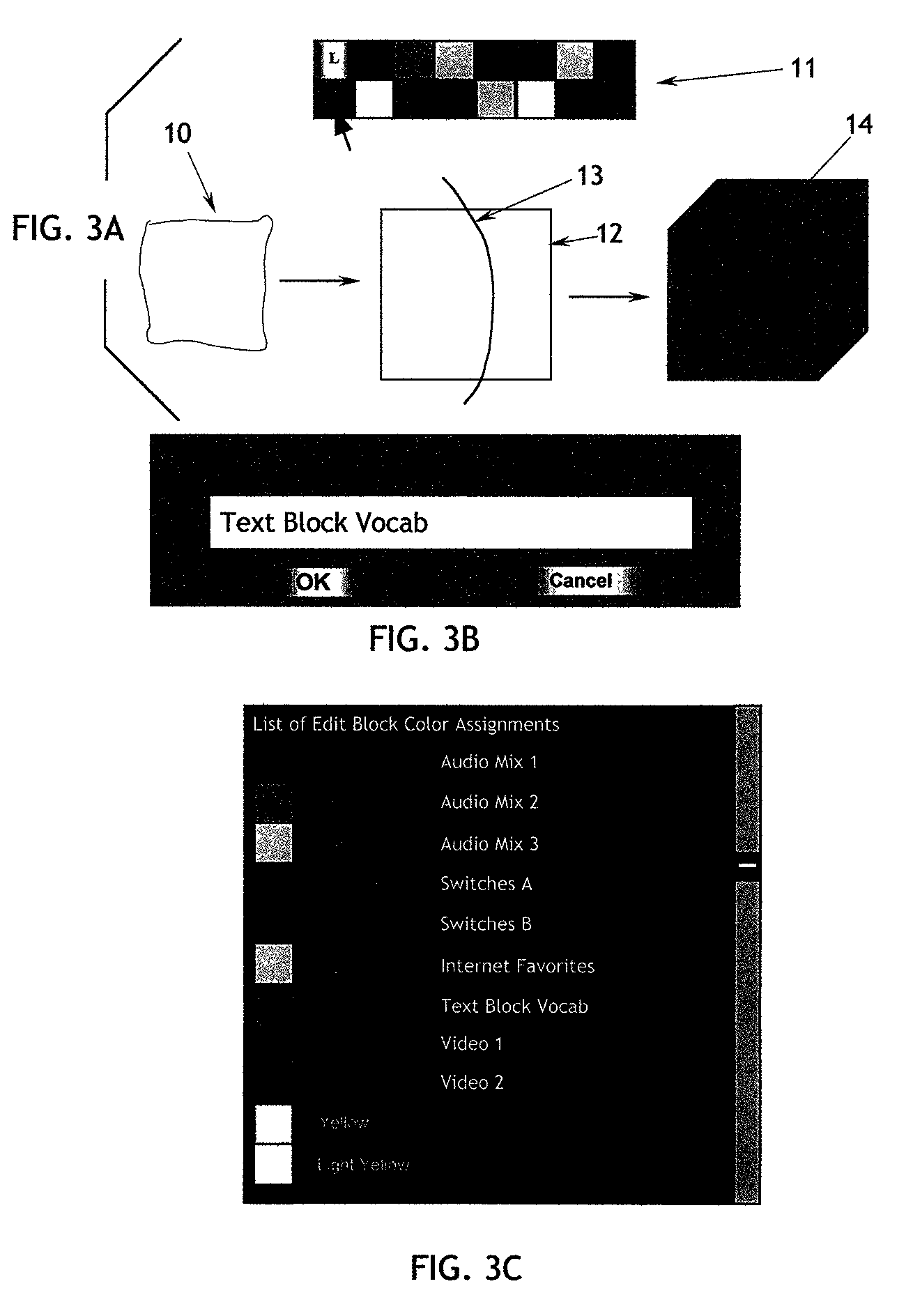Storage/display/action object for onscreen use
a technology of action objects and storage, applied in the field of storage/display/action objects for onscreen use, can solve the problems of inconvenient user change, inability to provide easy visualization of what has been stored, and inadvertent overwriting of stored items by users, so as to achieve the effect of convenient chang
- Summary
- Abstract
- Description
- Claims
- Application Information
AI Technical Summary
Benefits of technology
Problems solved by technology
Method used
Image
Examples
Embodiment Construction
[0046]The present invention generally comprises a method for storing, displaying, and retrieving user-selected portions of text, data, displayed objects, actions, animations, video, functional operations, etc. The method is designed to operate on a computer having a display and a user input device, such as a mouse, track pad, touch screen, or the like which enables user interaction with the display. With regard to FIG. 1A, the invention provides a cube 21 displayed onscreen in perspective view, so that three facets of the cube are visible at all times. Each facet is capable of storing and displaying and manipulating a large number of items, as will be explained in the following description. The facets of the cube can be numbered in any fashion, one of which is shown in FIG. 1B, for easy identification. The cube 21 may be rotated onscreen about two or more axes, i.e., A and B (horizontal and vertical), so that all facets may be brought into full or partial visualization. Rotation is ...
PUM
 Login to View More
Login to View More Abstract
Description
Claims
Application Information
 Login to View More
Login to View More - R&D
- Intellectual Property
- Life Sciences
- Materials
- Tech Scout
- Unparalleled Data Quality
- Higher Quality Content
- 60% Fewer Hallucinations
Browse by: Latest US Patents, China's latest patents, Technical Efficacy Thesaurus, Application Domain, Technology Topic, Popular Technical Reports.
© 2025 PatSnap. All rights reserved.Legal|Privacy policy|Modern Slavery Act Transparency Statement|Sitemap|About US| Contact US: help@patsnap.com



